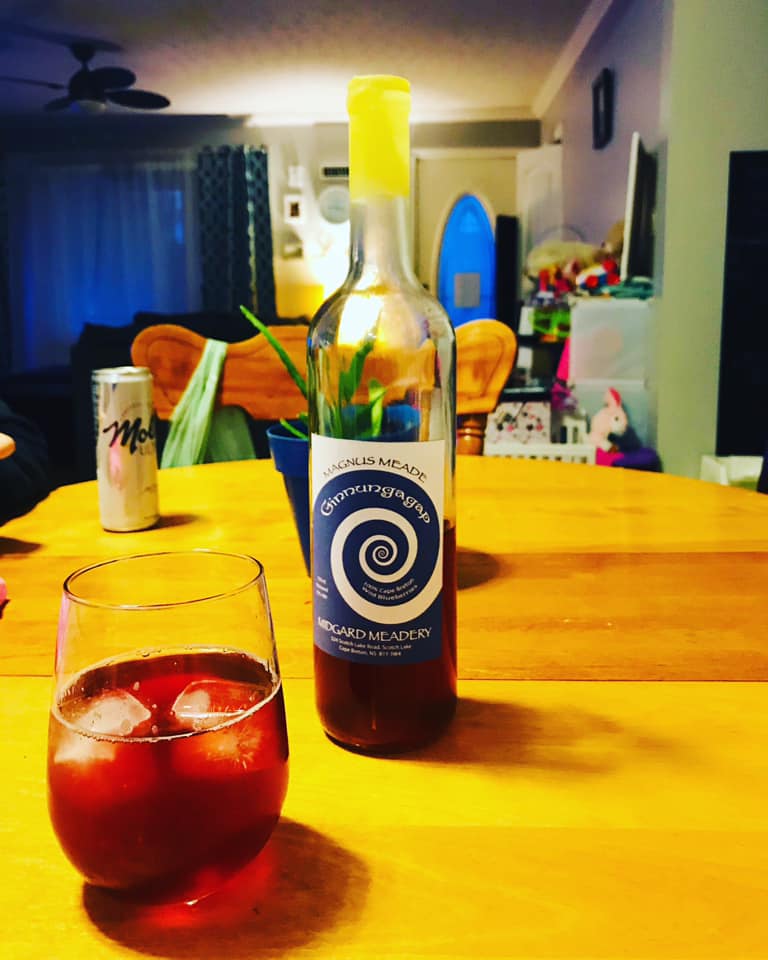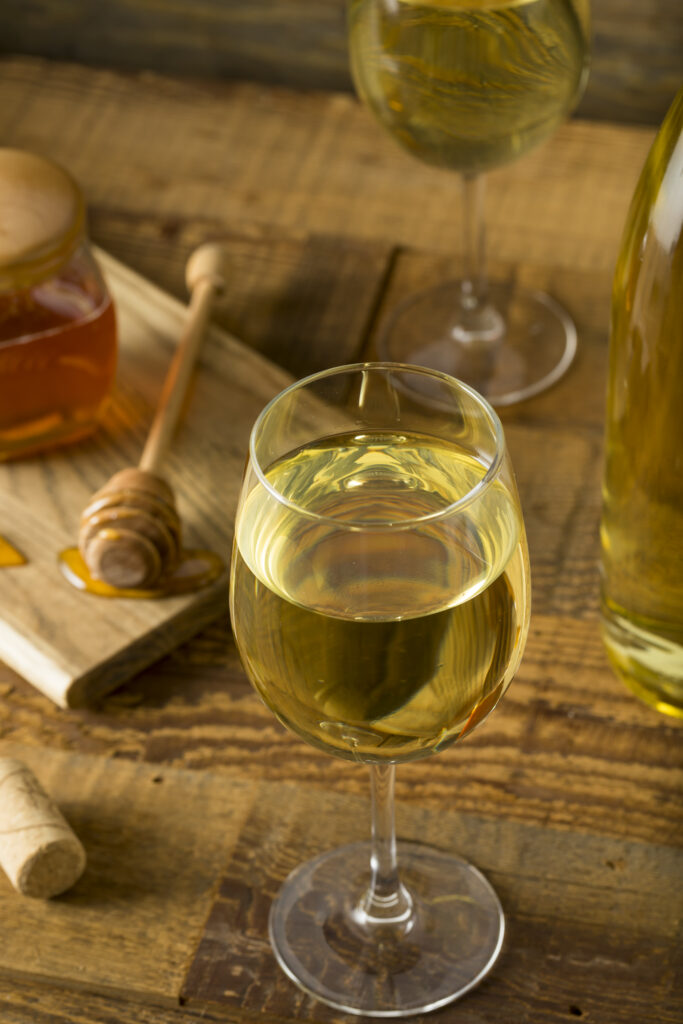Viking Mead – Get thee to the Longhouse for a Pint
Can you imagine yourself sitting amongst the ruckus and clatter of medieval viking mead halls? Do you yearn to pass around the drinking horn with your comrades after a long day of planning battle? Despite the time that has passed, viking mead is still readily available and produced today. We do not always consume it by a longfire, after vanquishing our enemies these days. But it is just as enjoyable shared with a few friends around a camp fire. This honey wine is probably being produced somewhere in your local area.
Find a local meadery
I moved home from Iceland in 2018. (Check out more about the vikings in Iceland, here). It was pretty surprising to frequent my local farmers market one Sunday morning and find viking age mead being sold. I obviously picked up a couple of bottles and took them home to investigate. Viking enthusiasts who pay homage to the traditional process of making mead can be experienced in nearly all parts of the world. Mead was clearly a large part of norse mythology, and we find evidence of that everywhere.

What do we need to know?
This post will look at the drink itself, examining how mead is made. This is especially interesting in the northern world, where you might assume access to ingredients would be a challenge. I will also briefly touch on some of the significant mentions of mead found in the history. The photo below is a bottle I took home from my local meadery. I tried two kinds. One was a traditional mead with a heavy honey flavor. The second was a popular mead made of dark berries with a floral aftertaste. Mead has a fairly high alcohol content. More than most of your craft beers, but not as high as say a Scotch.

How is it made?
The recipe itself if rather easy. Mead is essentially fermented honey water. You literally take a pot of water and add raw honey and it will ferment. This is because of the wild yeast that would occur in pure honey before it is pasteurized. During the middle ages the yeast nutrients would have been untouched allowing a fermentation enthusiast to simply sit back and watch the savoury traditional mead come to form.
The process was not perfected
The process, of course, was wildly long and arduous, and wouldn’t always produce a high quality mead. It is among the oldest alcohols in the world though. We can therefore imagine that by the time it was passed on to viking society, there would have already seem some semblance of a recipe, and some known tricks of the trade. Mead was definitely used all over continental Europe, but we know the vikings drank it fairly regularly, and also used it for special occasions. Just like the small town I grew up in, drinking seemed to be an important part of their culture.

Common fruits for Viking mead
Mead is one of the oldest alcoholic drinks. We know that mead ferments itself, which means ancient cultures would have had this readily available. But what if you wanted a certain kind of mead? Well the vikings were well travelled. This means they had plenty of access to exotic fruits and flavours. They could not necessarily grow the things needed to make a mead with a sweet flavor like a fruit wine. However, the age of the vikings was full of exploration. This meant flavours came from as far away as the Mediterranean sea.
Common fruits they would have collected on their travels would be raspberries, and elderberries. Earliest references also mention hawthorn berries, cherries and sour cherries. They could make a semi-sweet mead with rose hips and rowan berries, strawberries, or even crabapple for a nice sour.
Honey was actually pretty abundant. It seems most cultures had learned early how to pluck natural ingredients from their environments. Local hives would have been harvested for their honey. This meant that even those living on the fringe of the known world were still enjoying the highest quality of mead.
Natural Yeasts
In order to kick start the fermentation process the vikings needed yeast. Today we just do a quick hop to the grocery store and pick up the self-rising, or easy rising little yellow packet, and that does the trick. But the vikings didn’t really know much about the yeast itself. They mainly relied on the raw honey releasing yeast itself, or even perhaps the air.
They eventually began stirring the brew with stick and noticed it got coated in dry yeast, which when dipped into the next brew, helped move the process along faster. While they were not exactly sure of the magic happening behind the process, they nailed the recipes pretty quickly. Their process was the quick and dirty method, but sometimes the only way is the best way.

Mead was important in Norse Mythology
Mead is the oldest alcoholic beverage known to us. It is older than ale or wine. From Greece, to Persia and India, evidence of mead is found as far back as 8000 years. In Norse mythology mead is considered the sweet nectar of the gods.
Mead was magical to the norse people. The Poetic Edda tells us of the Mead of Poetry. Mead is a symbol of the Norse God Odin. You can check out more of his symbols, in my post on Viking Symbols and Their Meaning. You can check out some Viking Symbols and Meanings here. In the saga literature, mead is the only food source known to be consumed by the God Odin. According to the story passed down to us, the mead is made from the blood of Kvasir.

The Mead of Poetry
Kvasir was the wisest and more learned man. He was born of the saliva of the two combative groups of Gods, the Aesir, and the Vanir. Everyone was jealous of this guy because he was so clever. Two dwarves named Fjalar and Galar were weary of these academic types, and they wanted to destroy Kvasir. So they kill him and they distill his blood in a magic cauldron. The giant Suttung comes along and he stirs in some honey. They end up brewing the “mead of poetry”, or the magical mead. Those who now drink it will be bestowed the gifts of wisdom and poetic inspiration. So obviously Odin wants this stuff pretty bad.
Odin wanted to acquire the mead of poetry
Odin got his hands on this magical mead through some quality social engineering. First he showed up to this property and saw a bunch of slaves out dealing with the hay. He comes along and says he will help them. So he pulls out a whetstone and offered to sharpen their scythes for them. It worked so well that they all begged to purchase it. But Odin saw their desperation and tossed it up in the air, knowing they would all fight to the death for it.
Now that all the help on the farmstead has perished, Odin saunters into the house and offers his services for the winter. He says he will do the work if in exchange he can be paid with a draught of Suttungr’s mead. The homeowner is the brother of Suttungr, and is like “i’ll have to ask my brother”. Odin does the work but when he goes to collect his payment Suttungr is not willing to give up any of the mead. So clearly Odin must steal it for himself.

Through trickery, Odin steals the Mead of Poetry
The giant Suttungr kept the mead in a mountain where he resided. Odin drilled a hole in the side of the mountain, and taking the form of a snake, he slipped in. He was able to access the mead, and for three nights he drank his fill. He then transformed himself into an eagle so he could fly away. Suttungr discovered this and turned into an eagle himself and followed in pursuit.
As Odin was approaching the Aesir, they held out containers for him to spit all the mead he was holding in his mouth. He filled the containers, and the Aesir was able to escape with the mead. However, it is said that he spilled some of the mead and it splashed down onto the earth. This is how we now account for all the poor poets and uninspiring scholars among the world of men. Odin resides in the halls of Valhalla where those who died in battle would go to drink mead forever after death.
People are still making mead today
When I moved home from Iceland in 2018, I happened upon an article about the locals farmers market that talked about locals producing mead. I went to visit their meadery and saw that they were producing their own honey with bee boxes surrounding the entrance to the property. They were clearly inspired by the vikings use of mead, with names inspired by the various realms, or weapons associated with viking society.
It’s a cool drink with such a variety of flavours that you’re bound to find one you enjoy. I was more interested in trying it because of its historical connections, but I was suprised to discover I really enjoyed it.

